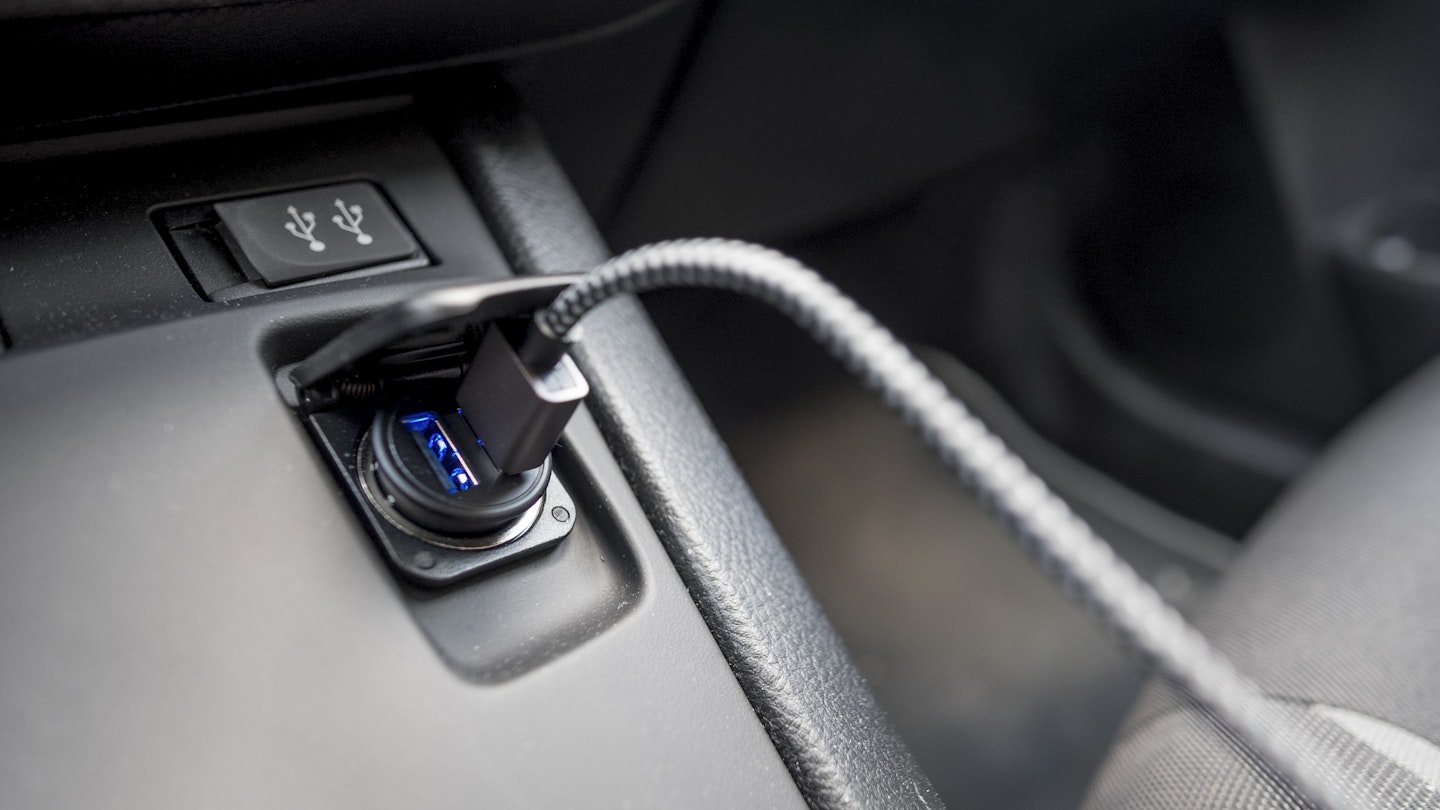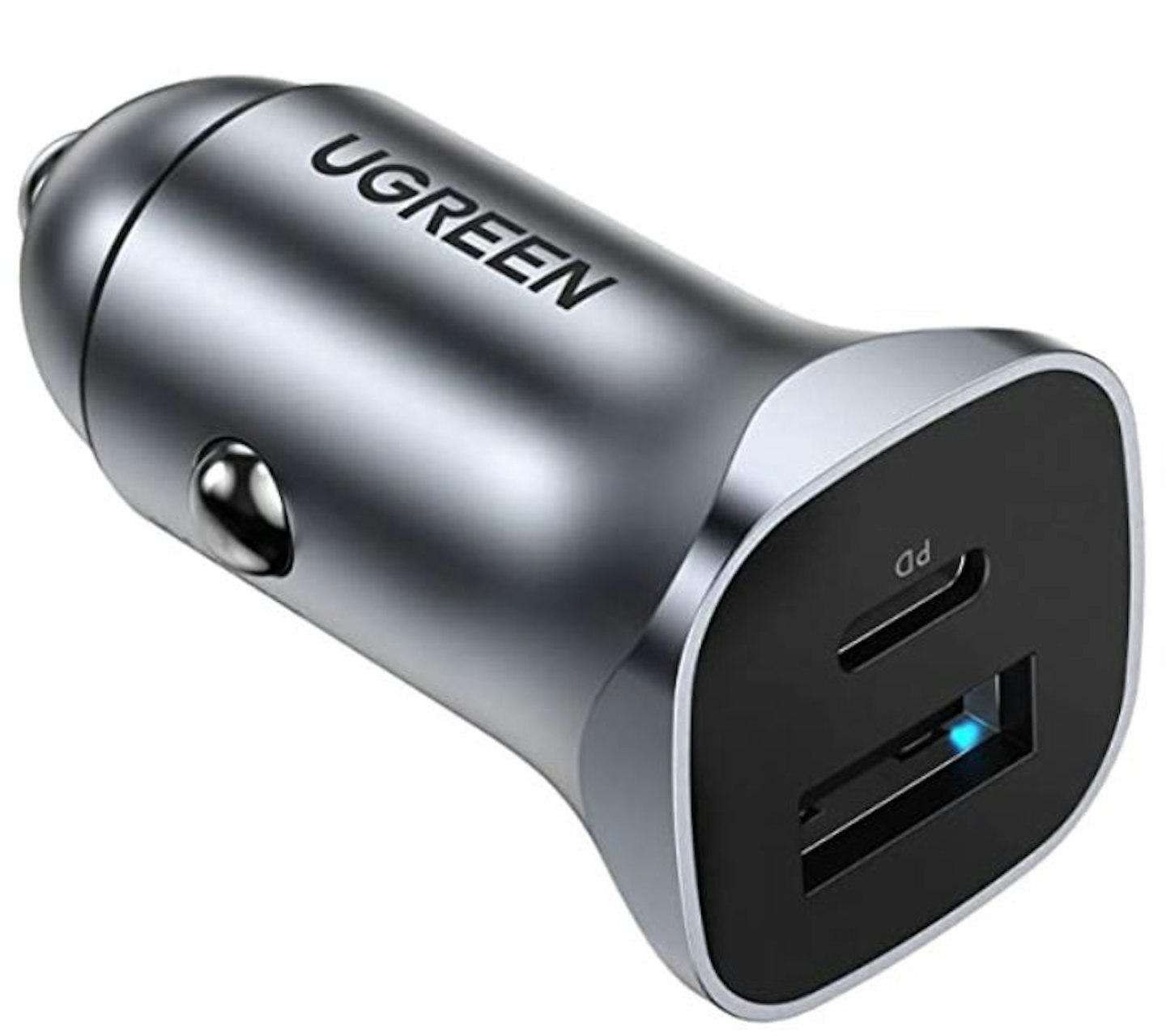Upgrading older cars to today's tech standards is reasonably straightforward. We’re not talking about anything drastic like cylinder deactivation, hybrid systems, or solar glass, but simple additions that bring a touch of modernity. Think of it as getting yourself a new smartphone as opposed to injecting yourself with nanoparticles.
For example, adding voice-controlled Alexa to your car is made simple thanks to the Echo Auto. You can add sat-nav by getting a reliable phone holder and using your phone or investing in a purpose-built sat nav device. You can add an aftermarket head-up display, Bluetooth headset, or even a reversing camera.
On-demand device charging has become expected everywhere, on the train or bus, in cafes, and cars. Regarding USB ports in cars, it’s commonplace in new models, even the Dacia Sandero has a USB socket in its most basic trim level. USB-C is not quite so universal, only being introduced into some cars a few years ago. Fiat-Chrysler (now Stellantis) started putting USB-C in its cars in 2018, for example.
But many cars more than about 10 years old may not have any USB ports at all, which can be annoying. It’s a problem easily rectified by a USB port that slots into a car’s 12V socket. But the tricky bit is knowing which of these USB car plugs is best because there are about a million different versions.
We’ve done all the browsing and page trawling for you and recommended the top three USB car chargers below to make your decision incredibly easy. Each model is slightly different but all are durable, reliable chargers with fast charging USB-C Power Delivery technology.
The best USB car chargers
Editoru2019s pick
Port one: USB-C 30W | Port two: USB-A 18W | Max combined: 48W
With build quality sorted, USB-A and USB-C ports with fast charging on offer, this is the USB car charger that covers all important bases. You can fast charge with both ports up to a combined total of 48W. The USB-C port can handle up to 30W, which can be used for laptops. This charger automatically adjusts the power for each device connected to it to ensure it’s at the optimum level.
Therefore, this charger is capable of handling the maximum charging rate of smartphones.
Best compact USB charger
Port one: USB-C 20W | Port two: USB-A 18W | Max combined: 24W
This USB charger sits in a 12V socket reasonably flat, which is certainly an aesthetic bonus. It’s not capable of undertaking simultaneous fast charging like the Veld charger but it can charge two devices up to a combined output of 24W.
It can fast-charge when only one device is connected to either port. We also applaud the sound build quality.
Best for modern devices

Port one: USB-C 18W | Port two: USB-C 18W | Max combined: 36W
Belkin’s dual USB-C charger is ideal for those with the latest devices. Like the Veld charger, this is also capable of dual fast charging Apple, Android, and Google devices. For example, you’ll be able to charge an iPhone 8 or later from zero to half charge in 30 minutes, if you use the USB-C cable with the Lightning connector.
It is a bit pricey but it’s a really well-made and reliable charger.
What we looked for
Reliability, safety, and practicality were the three standards that the USB chargers had to pass to even be considered. Most failed on the first two. Super cheap models and those with more than two ports do not tend to work properly or safely.
At the mention of multiple ports, it’s important to remember that more ports aren't equal to more charging. There is a limited amount of power that the 12V socket can supply, and that power supply can go to one or two devices just fine but with more than three, charging is going to be very slow.
Do USB car chargers drain car batteries?
While an ICE car is running, there is no problem. A USB charger will draw a little power from an ICE car’s battery but not anything significant. With electric cars, it’s a similar story, though you need to remember any power drain is being taken directly from the batteries that fuel the car.
You may not even be able to use the USB charger when a car is off, depending on the model. Some cars continue to supply power to the 12V when off, some don’t. A car battery still has to power things when off, so it’s best not to add any extra drain while a car is off. If you’re wanting a power supply for charging devices when a car is off or in any other relevant circumstance, consider getting a power bank.


